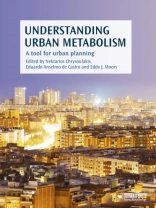Understanding Urban Metabolism addresses the gap between the bio-physical sciences and urban planning and illustrates the advantages of accounting for urban metabolism issues in urban design decisions. Urban metabolism considers a city as a system, and distinguishes between energy and material flows as its components. Based on research from the BRIDGE project, this book deals with how the urban surface exchanges and transforms energy, water, carbon and pollutants in cities. This book also introduces a new method for evaluating how planning alternatives can modify the physical flows of urban metabolism components and how environmental and socioeconomic components interact.
The inclusion of sustainability principles into urban planning provides an opportunity to place the new knowledge provided by bio-physical sciences at the centre of the planning process, but there is a strong need to bridge knowledge and practice, as well as for a better dissemination of research results and exchange of best practice. This book meets that need and provides the reader with the necessary tools to integrate an understanding of urban metabolism into urban planning practice.












